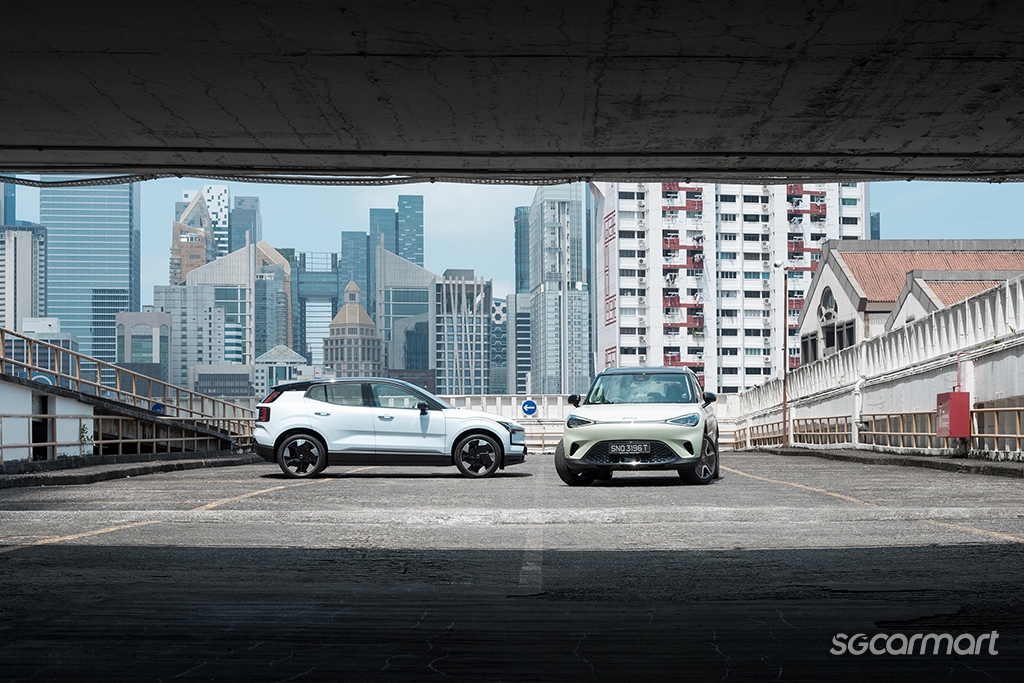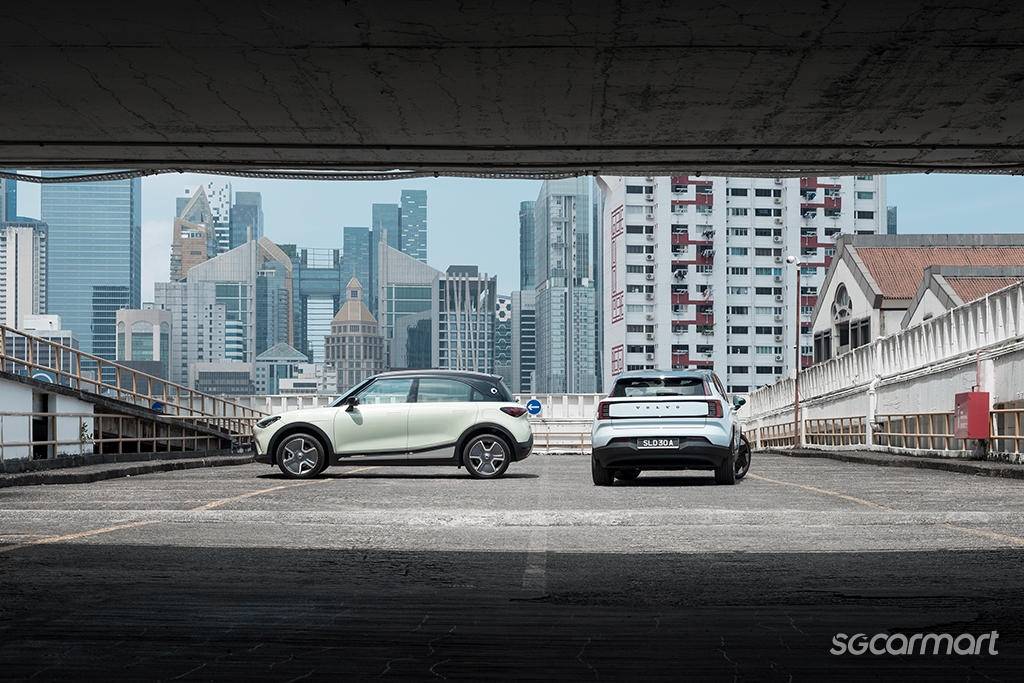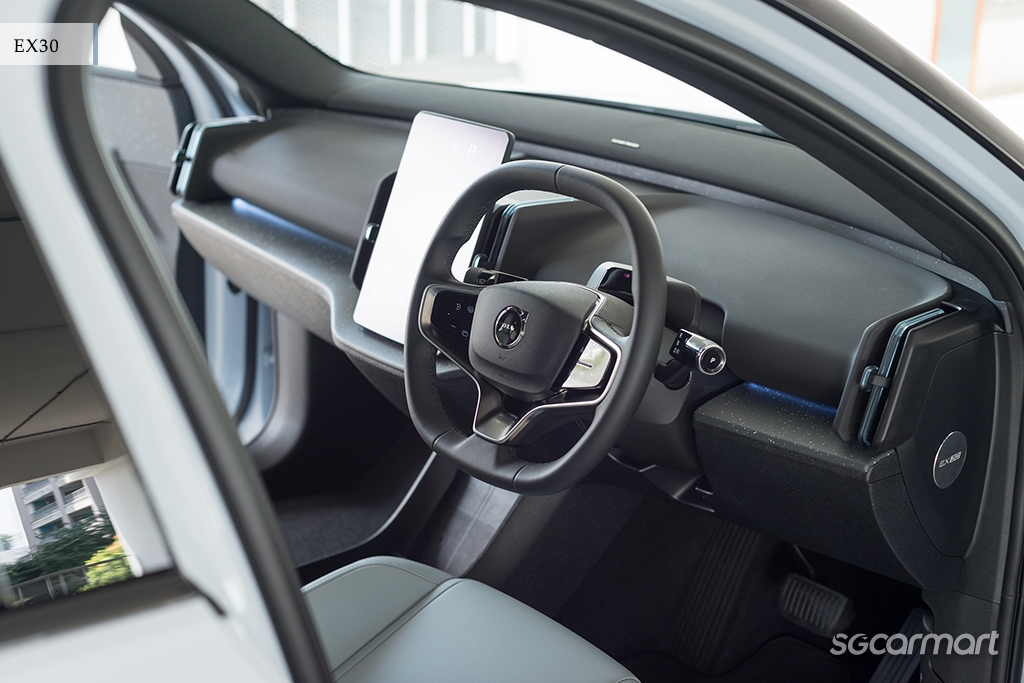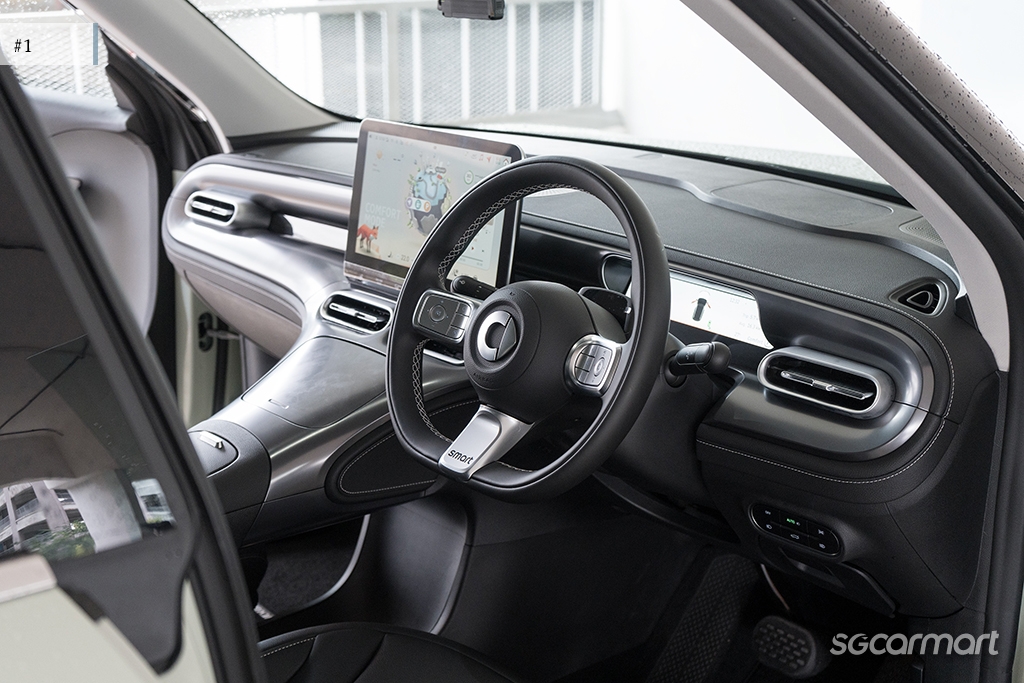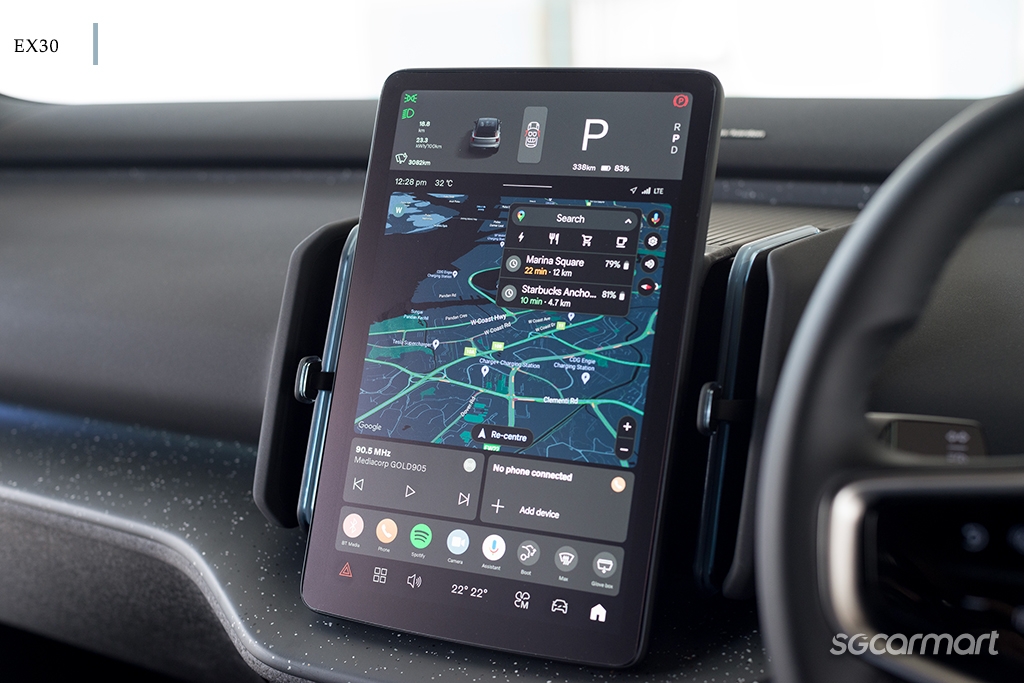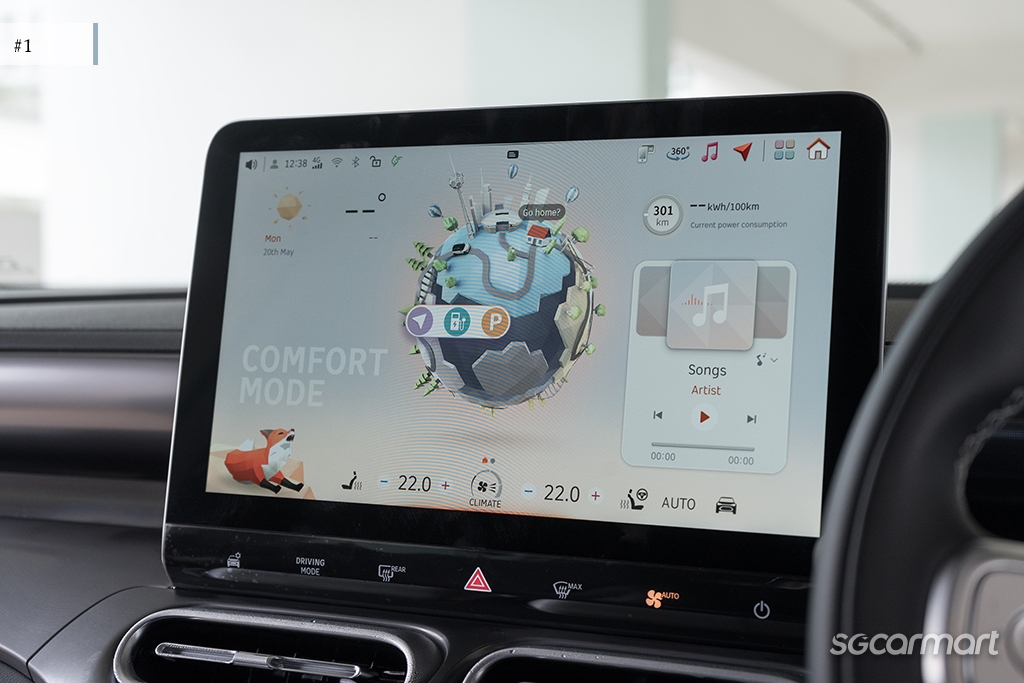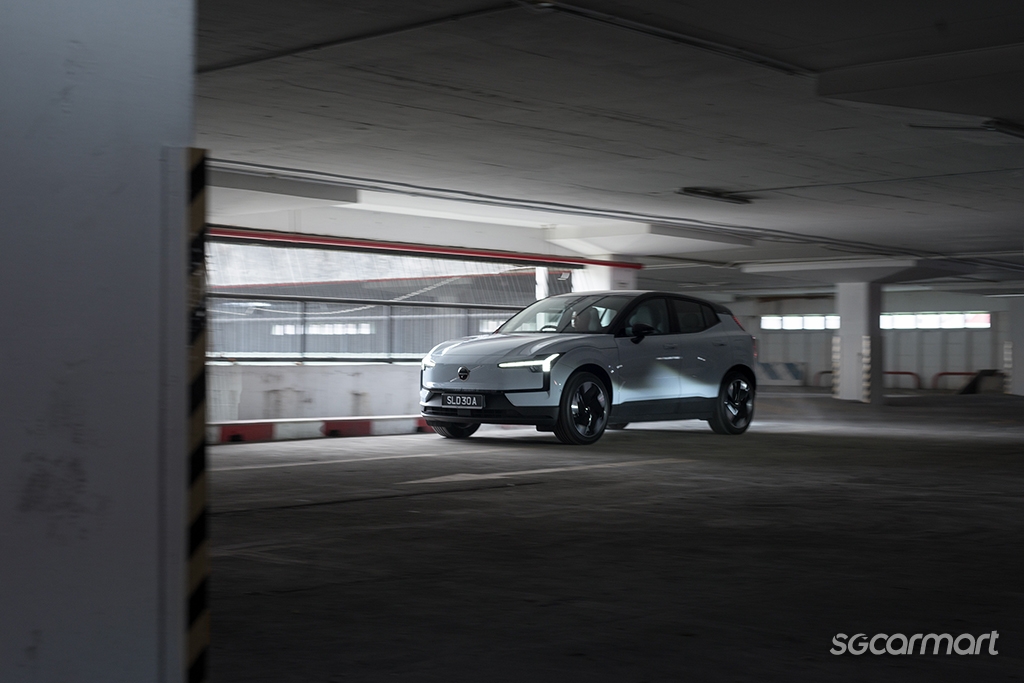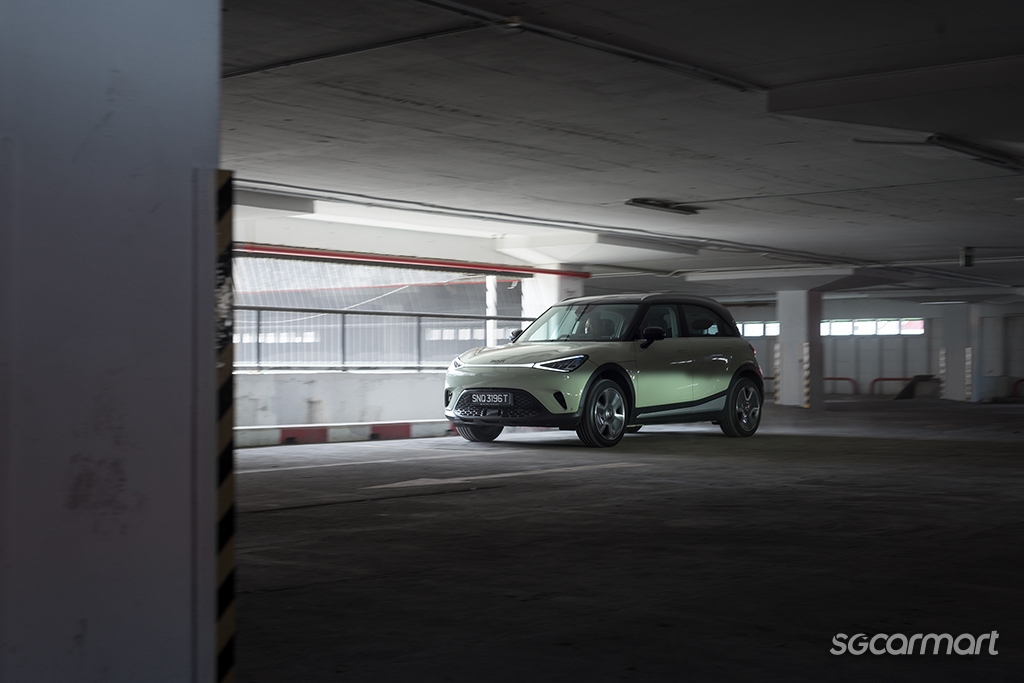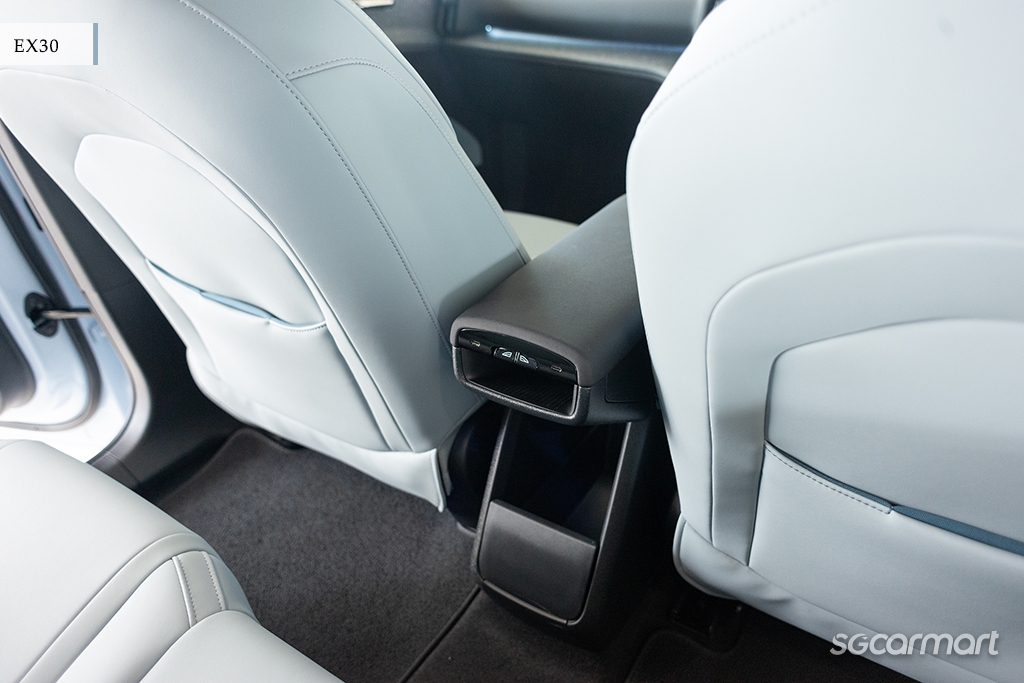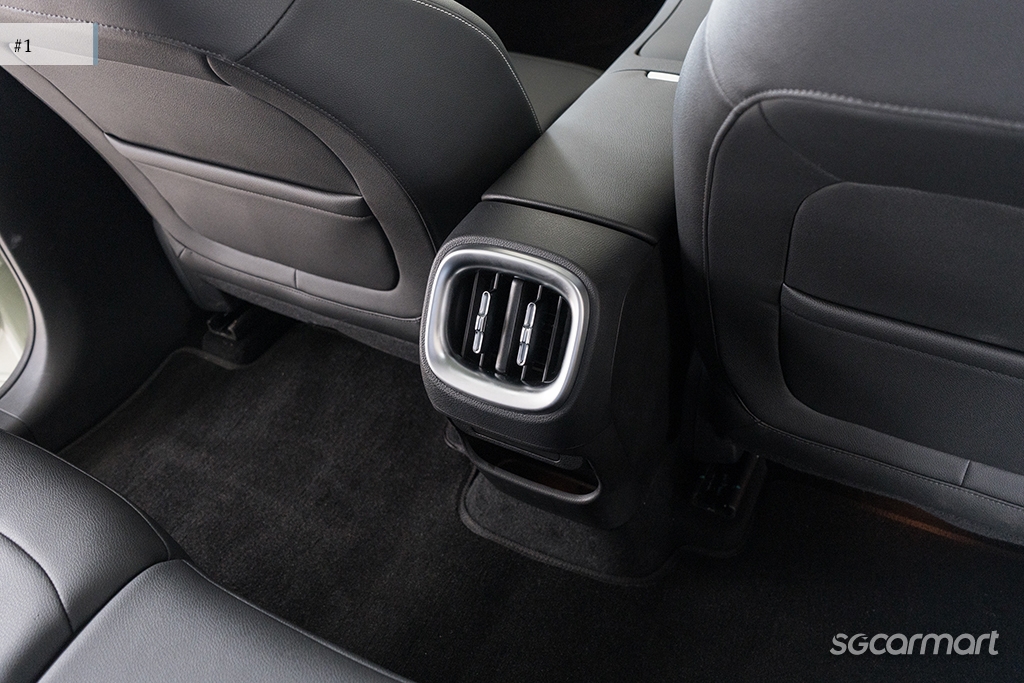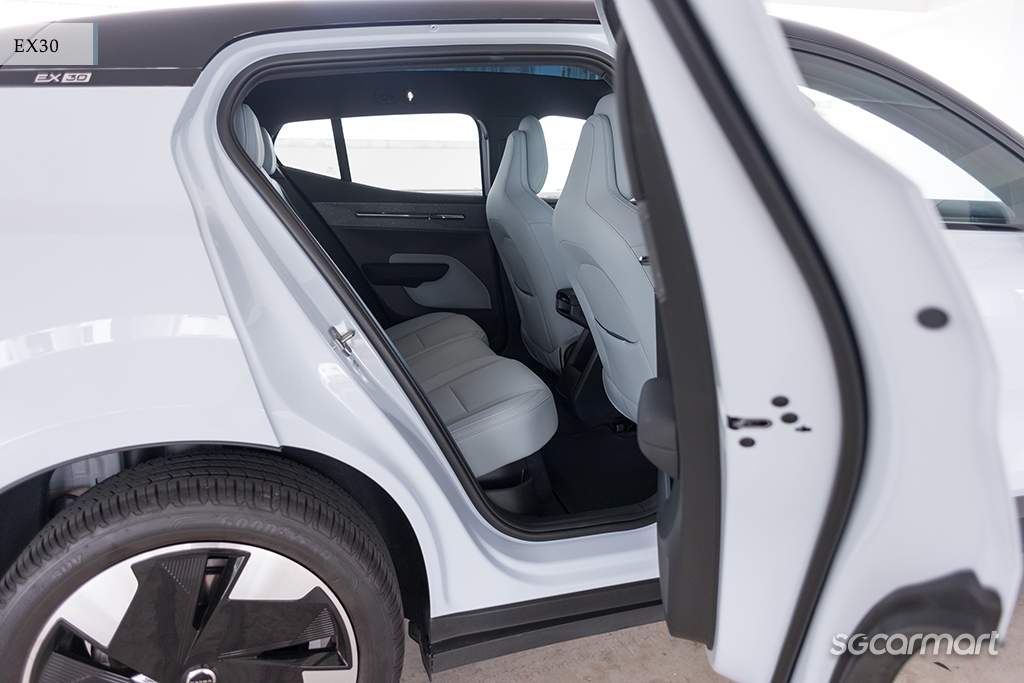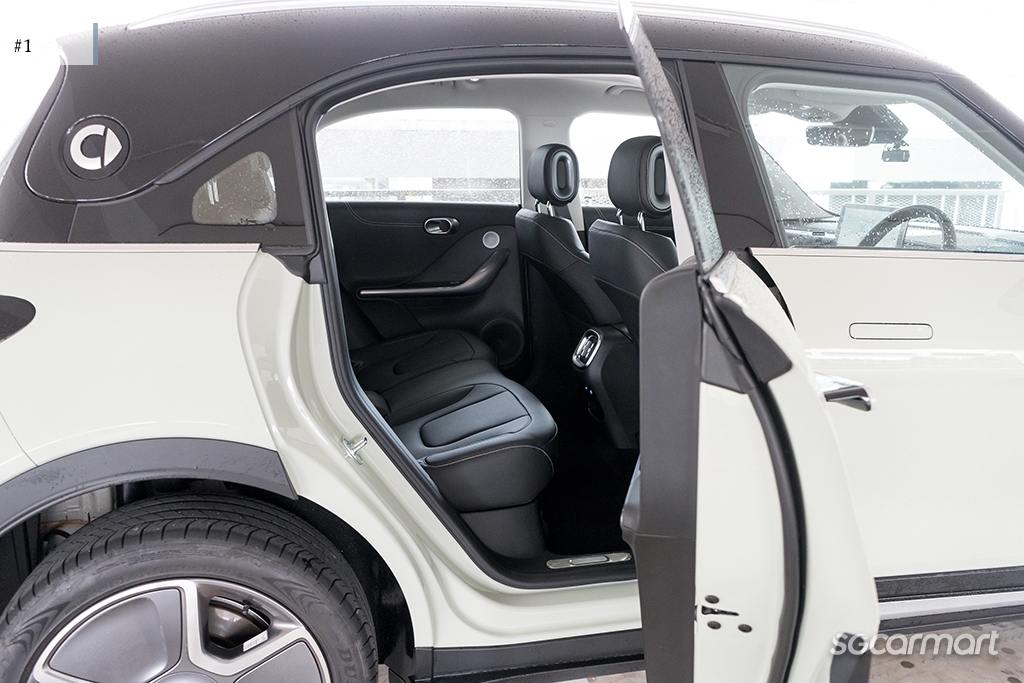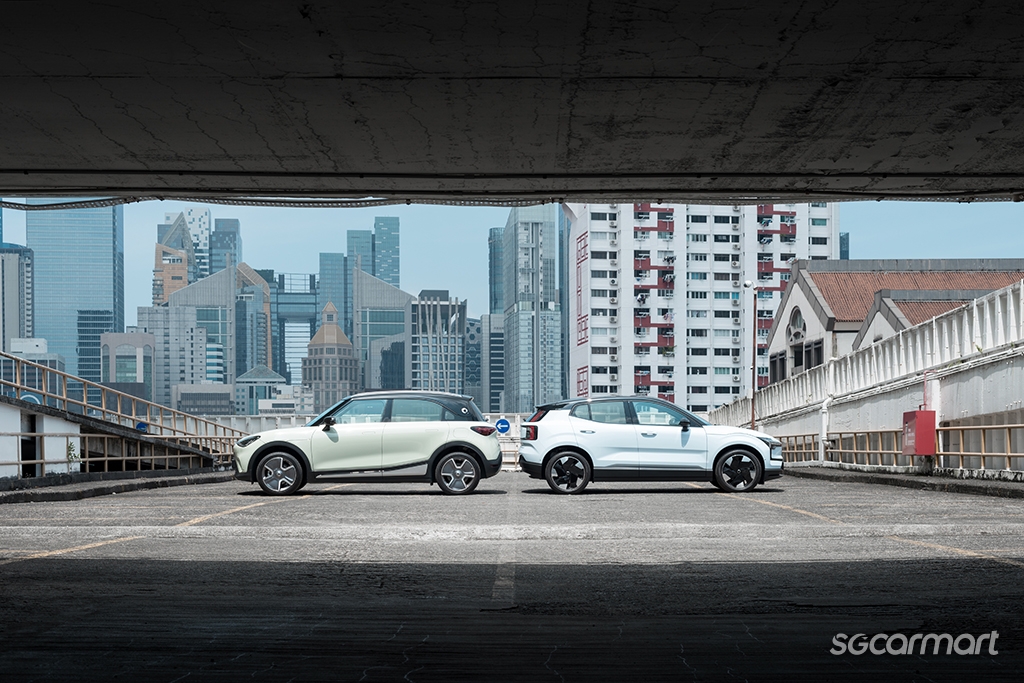Volvo EX30 Ultra vs Smart #1 Pro+
02 Aug 2024|6,588 views
Volvo EX30
More resolved and pliant ride
Better brand recognition
Feels more spacious for front passengers
More conservative exterior design
Smart #1
More intuitive control layout
Easier ingress and egress for rear passengers
Comes with rear air-conditioning vents
More playful inside and out
Setting up these comparison articles is usually an exciting prospect: They are an opportunity to see what product developers think customers want, what a manufacturer's engineers are competent at, and how its executives pitch and price their products against the competition.
But I was rather hesitant to line these two up against each other. The pair gathered here not only share the same platform, but also come at a practically similar price point and share similar exterior dimensions. The risk that we were going to run into two cars so similar that picking one over the other would involve splitting hairs felt very real.
As it turns out, this fear was unfounded.
The Smart #1 is the more visually interesting car from the front thanks to its rounded form and head lights, but the Volvo EX30 counters with an intricate taillight arrangement at its rear
The exterior designs of both cars provide an early clue into just how different these two are.
Both cars share the same compact crossover form that mean the uninformed could easily mistake either for the sort of inner-city hatchback that has become so recognised as the sort of car we should all be driving if we want to bring down our personal carbon footprint.
But from there onward things deviate radically.
The cabin of the Volvo will take more getting used to for many as there's no instrument cluster and a portrait-oriented infotainment screen here. The Smart #1's cabin is more conventional in comparison
The Smart #1 looks the more youthful of the two - its rounded corners and shapely intake at the front look like they could have been lifted from some cheeky cartoon character from the early 90s. And there's plenty visual addenda here that will catch the eye no matter which direction you care to take in the car from. These include the full-width head lights and taillights, as well as the curvy C-pillar that houses an additional Smart logo.
The Volvo EX30, in contrast, looks the more sensible of the two. You get a simple covered front in lieu of a grille here, only adorned with the Volvo logo and diagonal bar so it remains recognisable as a Volvo, even if the car now gets a new iteration of the Thor's hammer head lights. Having said that, the quad taillights of the EX30 will serve as quite the conversation starter.
The infotainment layout of the EX30 may look more utilitarian next to the one in the #1, but the system in the Smart is actually the more user-friendly of the two
Step inside both cars and the differences grow more apparent.
The Smart #1 is the more immediately familiar of the two: There's a conventional centre console, driver's instrument cluster, and the infotainment screen adopts a landscape orientation here. The first two are absent in the Volvo, which also gets a portrait-oriented central screen.
Both cars require you to dig into their respective infotainment screens to adjust their wing mirrors - a frustrating touch - but there's plenty more in the EX30 that requires getting used to.
Take, for example, the fact that there's just one toggle switch to adjust the driver's seat in the Volvo. You'll need to press the button located atop this toggle knob so it alternates between sliding the seat fore and aft, the angle of the backrest, or to adjust the level of lumbar support.
Both the Volvo EX30 and Smart #1 are built atop the same Geely group platform, but the ride in the Volvo feels the more pliant and settled of the two
Need to wind up the rear windows? There isn't a dedicated switch for each window as in most cars here. The Volvo only has two, so you'll need to press a third button to make these wind up the windows at the back.
Volvo will point out that these touches have been done to reduce the overall number of switches the car utilises, and thus bring down the total wiring needed for each car and its subsequent carbon footprint. But this doesn't excuse the fact that you'll need to press another button to access the settings for the cabin temperature even when you're already at the main air-conditioning menu. A relook into the ease-of-use of the controls here feels necessary.
Getting in and out of the rear seats of EX30 (which are not served by their own air-conditioning vents unlike the #1) also feels a touch more difficult.
There's no air-conditioning vents for rear passengers in the EX30 although they are present in the #1 - Volvo has opted instead to place the window switches here to cut down on the car's total wiring and bring down its total carbon footprint
It's a good thing the Volvo feels the more pleasant of the two to drive.
Despite sharing the same Sustainable Experience Architecture 2 from the Geely group, the EX30 feels the more settled and the more pliant of the two on the move. Pair this with a throttle and brake pedal tuning that feels more linear and natural and the Volvo emerges as the more easy of the two crossovers here to drive.
The rear of the Smart #1 feels the more spacious of the two, and ingress and egress from here also feels easier compared to the Volvo EX30
There's a lag between when you depress either pedal and the application of power or braking force that just requires a bit more time to get used to before you'll be able to make smooth getaways and stops in the #1.
Having said that, you'll want to note that the Volvo does not allow you to vary the level of regenerative braking deployed, or offer different drive modes.
Taller drivers will also find the wide centre console in the Smart #1 comes at a detriment to available knee room, although this isn't as much relieved in the Volvo EX30 as you might imagine despite the lack of a centre console - the dashboard still makes a significant dip to accommodate a centrally-mounted glovebox on top of making space for that infotainment screen.
So, which of these cars should you pick? With only $3,888 splitting the two (the #1 comes in at $238,888 while the EX30 can be yours from $235,000, all prices as of 1 August 2024), I'd imagine those who will frequent use of the back row of seats should be happier with the Smart. Passengers relegated here are not only better catered for, but those at the front will also find an all-electric experience that does not deviate too far from other cars when it comes to its general user interface.
The keener driver, meanwhile, would do well to pick the Volvo. Despite its unusual controls presenting a steeper learning curve, the EX30 rewards richly with its more resolved ride. The fact that the Volvo comes with greater brand recognition certainly doesn't hurt its appeal next to the Smart either.
And if you're still on the fence, there's also the option to look out for the Zeekr X that is imminently set to make its official debut here in Singapore. It's built on the same platform as these two we have gathered here but comes with an exterior that easily beats both the Volvo and the Smart if distinctive design is what you're after. Look out for our review of the car here in the coming weeks. There's a high chance it too will manage to stand out in other ways from the pair we have here.
Looking for more head-to-head reviews? These stories may interest you:
The Mercedes-Benz EQA takes on the Volvo XC40 Recharge
The BMW X1 sDrive16i goes against the Mercedes-Benz GLA180
The Volkswagen T-Cross R-Line 1.0 takes on the Kia Stonic SX 1.0
Volvo EX30
More resolved and pliant ride
Better brand recognition
Feels more spacious for front passengers
More conservative exterior design
Smart #1
More intuitive control layout
Easier ingress and egress for rear passengers
Comes with rear air-conditioning vents
More playful inside and out
Setting up these comparison articles is usually an exciting prospect: They are an opportunity to see what product developers think customers want, what a manufacturer's engineers are competent at, and how its executives pitch and price their products against the competition.
But I was rather hesitant to line these two up against each other. The pair gathered here not only share the same platform, but also come at a practically similar price point and share similar exterior dimensions. The risk that we were going to run into two cars so similar that picking one over the other would involve splitting hairs felt very real.
As it turns out, this fear was unfounded.
The Smart #1 is the more visually interesting car from the front thanks to its rounded form and head lights, but the Volvo EX30 counters with an intricate taillight arrangement at its rear
The exterior designs of both cars provide an early clue into just how different these two are.
Both cars share the same compact crossover form that mean the uninformed could easily mistake either for the sort of inner-city hatchback that has become so recognised as the sort of car we should all be driving if we want to bring down our personal carbon footprint.
But from there onward things deviate radically.
The cabin of the Volvo will take more getting used to for many as there's no instrument cluster and a portrait-oriented infotainment screen here. The Smart #1's cabin is more conventional in comparison
The Smart #1 looks the more youthful of the two - its rounded corners and shapely intake at the front look like they could have been lifted from some cheeky cartoon character from the early 90s. And there's plenty visual addenda here that will catch the eye no matter which direction you care to take in the car from. These include the full-width head lights and taillights, as well as the curvy C-pillar that houses an additional Smart logo.
The Volvo EX30, in contrast, looks the more sensible of the two. You get a simple covered front in lieu of a grille here, only adorned with the Volvo logo and diagonal bar so it remains recognisable as a Volvo, even if the car now gets a new iteration of the Thor's hammer head lights. Having said that, the quad taillights of the EX30 will serve as quite the conversation starter.
The infotainment layout of the EX30 may look more utilitarian next to the one in the #1, but the system in the Smart is actually the more user-friendly of the two
Step inside both cars and the differences grow more apparent.
The Smart #1 is the more immediately familiar of the two: There's a conventional centre console, driver's instrument cluster, and the infotainment screen adopts a landscape orientation here. The first two are absent in the Volvo, which also gets a portrait-oriented central screen.
Both cars require you to dig into their respective infotainment screens to adjust their wing mirrors - a frustrating touch - but there's plenty more in the EX30 that requires getting used to.
Take, for example, the fact that there's just one toggle switch to adjust the driver's seat in the Volvo. You'll need to press the button located atop this toggle knob so it alternates between sliding the seat fore and aft, the angle of the backrest, or to adjust the level of lumbar support.
Both the Volvo EX30 and Smart #1 are built atop the same Geely group platform, but the ride in the Volvo feels the more pliant and settled of the two
Need to wind up the rear windows? There isn't a dedicated switch for each window as in most cars here. The Volvo only has two, so you'll need to press a third button to make these wind up the windows at the back.
Volvo will point out that these touches have been done to reduce the overall number of switches the car utilises, and thus bring down the total wiring needed for each car and its subsequent carbon footprint. But this doesn't excuse the fact that you'll need to press another button to access the settings for the cabin temperature even when you're already at the main air-conditioning menu. A relook into the ease-of-use of the controls here feels necessary.
Getting in and out of the rear seats of EX30 (which are not served by their own air-conditioning vents unlike the #1) also feels a touch more difficult.
There's no air-conditioning vents for rear passengers in the EX30 although they are present in the #1 - Volvo has opted instead to place the window switches here to cut down on the car's total wiring and bring down its total carbon footprint
It's a good thing the Volvo feels the more pleasant of the two to drive.
Despite sharing the same Sustainable Experience Architecture 2 from the Geely group, the EX30 feels the more settled and the more pliant of the two on the move. Pair this with a throttle and brake pedal tuning that feels more linear and natural and the Volvo emerges as the more easy of the two crossovers here to drive.
The rear of the Smart #1 feels the more spacious of the two, and ingress and egress from here also feels easier compared to the Volvo EX30
There's a lag between when you depress either pedal and the application of power or braking force that just requires a bit more time to get used to before you'll be able to make smooth getaways and stops in the #1.
Having said that, you'll want to note that the Volvo does not allow you to vary the level of regenerative braking deployed, or offer different drive modes.
Taller drivers will also find the wide centre console in the Smart #1 comes at a detriment to available knee room, although this isn't as much relieved in the Volvo EX30 as you might imagine despite the lack of a centre console - the dashboard still makes a significant dip to accommodate a centrally-mounted glovebox on top of making space for that infotainment screen.
So, which of these cars should you pick? With only $3,888 splitting the two (the #1 comes in at $238,888 while the EX30 can be yours from $235,000, all prices as of 1 August 2024), I'd imagine those who will frequent use of the back row of seats should be happier with the Smart. Passengers relegated here are not only better catered for, but those at the front will also find an all-electric experience that does not deviate too far from other cars when it comes to its general user interface.
The keener driver, meanwhile, would do well to pick the Volvo. Despite its unusual controls presenting a steeper learning curve, the EX30 rewards richly with its more resolved ride. The fact that the Volvo comes with greater brand recognition certainly doesn't hurt its appeal next to the Smart either.
And if you're still on the fence, there's also the option to look out for the Zeekr X that is imminently set to make its official debut here in Singapore. It's built on the same platform as these two we have gathered here but comes with an exterior that easily beats both the Volvo and the Smart if distinctive design is what you're after. Look out for our review of the car here in the coming weeks. There's a high chance it too will manage to stand out in other ways from the pair we have here.
Looking for more head-to-head reviews? These stories may interest you:
The Mercedes-Benz EQA takes on the Volvo XC40 Recharge
The BMW X1 sDrive16i goes against the Mercedes-Benz GLA180
The Volkswagen T-Cross R-Line 1.0 takes on the Kia Stonic SX 1.0
Car Information
smart #1 electric Pro+ 66 kWh (A)
$210,000
CAT B|Electric|5.7km/kWh
Horsepower
200kW (268 bhp)
Torque
343 Nm
Acceleration
6.7sec (0-100km /hr)
Promotion
Celebrate this festive season as smart is offering a never before value savings of up to $45,888!
Read moreVolvo EX30 Electric Ultra 69 kWh (A)
$240,000
CAT B|Electric|5.7km/kWh
Horsepower
200kW (268 bhp)
Torque
343 Nm
Acceleration
5.3sec (0-100km /hr)
Promotion
Don't miss this exceptional Black Friday deals. Enjoy 5-year warranty, servicing, and more with Volvo today!
Read moreThank You For Your Subscription.
- Two Styles
- Two Interfaces
- Two Drives
- Which To Pick














































































